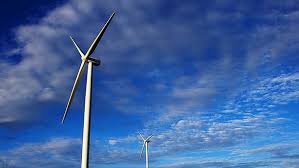 After a week spent being targeted by anti-coal protestors as part of a world-wide fossil fuel divestment campaign, ANZ Bank has revealed it has successfully closed a funding round for the development of a renewable energy project. Just not in Australia.
After a week spent being targeted by anti-coal protestors as part of a world-wide fossil fuel divestment campaign, ANZ Bank has revealed it has successfully closed a funding round for the development of a renewable energy project. Just not in Australia.
ANZ – whose Sydney headquarters were picketed by the protesters last Wednesday – revealed on Friday it had successfully closed the debt portion of funding for the $450 million Burgos wind project in the Philippines Ilocos Norte province.
Energy Development Corp., developer of the largest wind farm in the country, earlier signed a $315 million financing agreement with foreign and local banks to finance the ongoing construction of the 150 megawatt project, phase I of which is due to be completed in the fourth quarter.
According to reports, the ANZ’s has served as the project’s coordinating arranger, mandated lead arranger, documentation bank, offshore account bank, swap bank and intercreditor agent, ECA facility agent and US dollar facility agent of the transaction.
ANZ’s chief executive of Philippines and Thailand, Panadda Manoleehakul, said in a statement the transaction was a milestone for the Philippine renewable energy industry, which demonstrated the focus and strength of both ANZ and EDC in the sector.
“We are proud to have deployed our industry expertise across regional borders in the Philippines, Singapore and Australia,” Manoleehakul said.
But in Australia, where huge changes to climate and renewable energy policy – including interminable indecision surrounding the RET – have brought renewables investment to a standstill, the nation’s big banks are doing very little to drive the clean energy revolution.
According to reports, a group of Australian banks including ANZ, Macquarie Group, Westpac and the Commonwealth Bank, hold around 20 per cent of Australia’s large-scale renewable energy certificates.
But of course, the value of these certificates has varied hugely throughout the various RET reviews and policy negotiations.
In July, The Australian reported that LGCs had plummeted from $30.50/MWh to $26.05 shortly after the appointment of climate sceptic Dick Warburton as head of the RET review. LGCs then hit a low of $22.43 in June due to uncertainty of the outcome of the review, before bouncing back to $30.80 after Motoring Enthusiasts Senator Ricky Muir weighed in in support of renewables.
Meanwhile, the banks’ investment in coal and other fossil fuels continues apace, with the blessing of Prime Minister Tony Abbott and his Coalition.
Last year, joint research by Market Forces and 350.org named ANZ as the biggest lender to coal and gas export projects along Australia’s Eastern seaboard, including in the Great Barrier Reef World Heritage Area.
The organisations said ANZ topped the list of over 35 commercial banks, having loaned $2.35 billion to coal and gas ports from Newcastle to Abbot Point between January 2008 and May 2013. Commonwealth Bank was second on the list with $1.5 billion, followed by NAB and Westpac. The ‘big four’ Australian banks’ contributed almost a third of total project finance lending.
But ANZ does, at least, have some stock in the Australian renewables market. In September last year, it joined NAB to become the first two Australian banks to fund a large-scale solar project in the country, after agreeing to provide non-recourse project finance for FRV’s 20MW Royalla PV project near Canberra.








